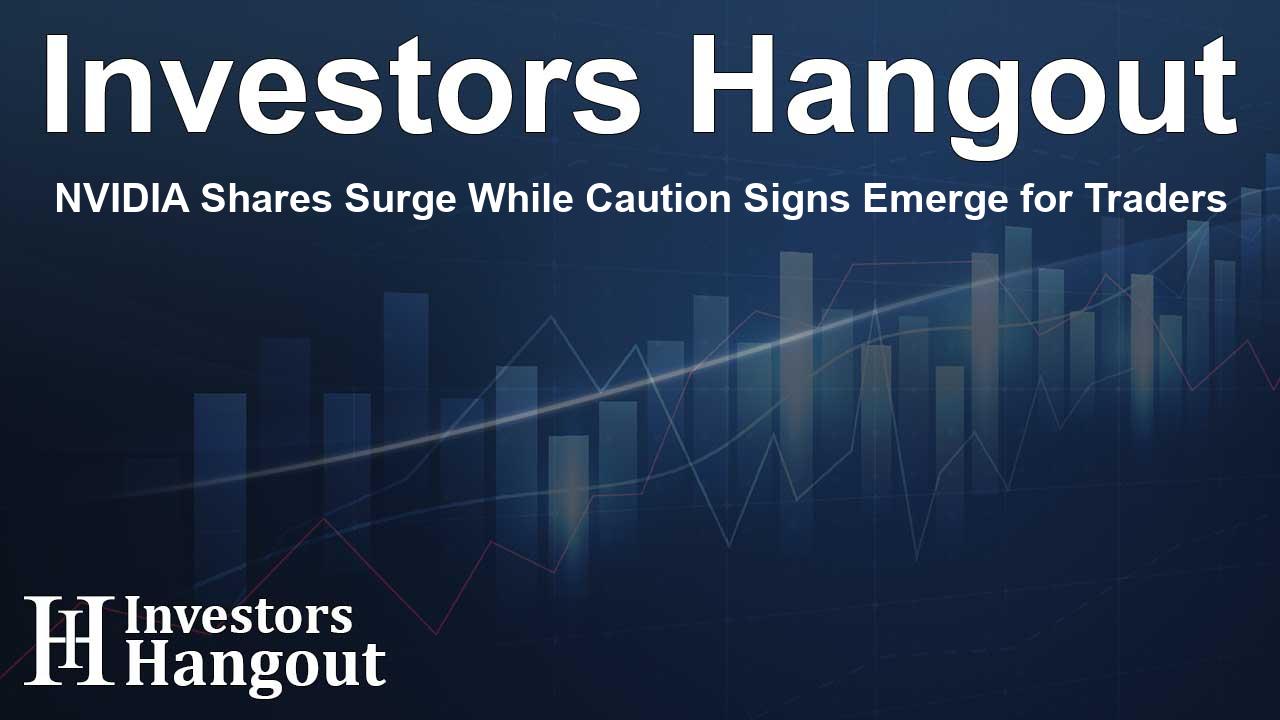NVIDIA Shares Surge While Caution Signs Emerge for Traders

NVIDIA Shares Surge Amid Record Performance
Recently, shares of tech giant NVIDIA Corp (NASDAQ: NVDA) have shown impressive performance, trading steadily after reaching close to a significant milestone of $180. This striking development reflects a remarkable 100% increase since the start of April, showcasing the immense growth potential in today’s tech market which values the company at around $4 trillion.
Since then, there has been a slight pullback, but the overall trajectory has indicated strong momentum, proving favorable for both momentum traders and long-term investors alike. However, even amidst this bullish trend, some caution signals have appeared from reliable technical indicators.
New Indicators Raise Caution for Traders
Among the noteworthy technical tools used in stock analysis is the Moving Average Convergence Divergence (MACD). This momentum indicator helps investors identify changes regarding trend strength and direction. Recently, NVIDIA’s MACD has shown a bearish crossover. This situation occurs when the shorter-term moving average crosses below the longer-term average, demonstrating a possibility of downward momentum.
This crossover event is usually seen as an alarm for traders, suggesting they might want to reduce their exposure to potential pullbacks. While such signals haven’t proven to be foolproof, they serve as essential signals to consider given the right context, especially at this stage.
To illustrate, last June, a similar bearish crossover pointed to a decline in NVIDIA’s stock, resulting in a 35% drop, which underscores the need for caution.
Relative Strength Index Confirming Overbought Conditions
Adding to the caution is NVIDIA's Relative Strength Index (RSI), which currently sits at a high level of 71. The RSI is another potent tool for measuring market momentum, helping determine whether stocks are overbought or oversold. Typically, an RSI above 70 indicates an overbought scenario, often preceding a price correction.
With indicators like the MACD and RSI suggesting potential reversals, it's becoming increasingly difficult to dismiss the caution signs. Investors must weigh the risks of holding onto their positions in NVIDIA, especially if the stock does not sustain its current valuation amidst upcoming market events.
Valuation Concerns Amid Growth Prospects
A further element of concern is NVIDIA’s price-to-earnings (P/E) ratio, which has surged from 35 in April to nearly 60 as of now. This hike in P/E ratio signifies how traders evaluate NVIDIA’s future growth relative to its current earnings. Increased expectations raise the stakes for the company as it heads toward its next earnings report.
Given the substantial rise in share prices recently, any disappointing earnings figures could lead to a swift sell-off, emphasizing the importance of this upcoming financial report. Investors are essentially investing in the company’s capability to deliver growth, which enhances the importance of forthcoming results.
Market Sentiment Remains Optimistic
Despite the emerging caution signals from technical indicators, broader analyst sentiment towards NVIDIA remains buoyantly optimistic. Leading institutions such as Jefferies, Bank of America, and Needham have reaffirmed their Buy ratings and set refreshed price targets, some reaching as high as $220. Given NVIDIA’s stock price around $176, this prediction indicates a potential upside of over 25%.
This prevailing investor enthusiasm, particularly around artificial intelligence technologies, positions NVIDIA as a top-tier player in a rapidly evolving tech landscape. The company’s stronghold in graphics processing, data centers, and custom AI hardware remains firmly intact, which continues to attract significant investor interest.
With NVIDIA among the year’s standout stocks, it’s crucial to assess whether this momentum can be maintained or if it will experience a correction.
Should Investors Consider Selling?
For those invested in NVIDIA for the long term, the emergence of these technical indicators may be more of a transient noise than a major concern. Short-term fluctuations depicted by MACD and RSI are not typically enough to disrupt the company’s strong fundamentals and strategic advantages.
For shorter-term investors, however, it might be wise to exercise caution. Observing how NVIDIA navigates through these technical alerts and responds to the market can provide critical insights, particularly with the next earnings report just around the corner.
Consequently, while NVIDIA's exciting potential is palpable, it may be prudent to monitor wider market sentiment and trading momentum before making any significant moves.
Frequently Asked Questions
What does a MACD crossover indicate?
A MACD crossover signal suggests a potential shift in momentum, where a bearish crossover may indicate a forthcoming decline in stock price.
What is RSI and why does it matter?
The Relative Strength Index (RSI) measures stock momentum. An RSI above 70 indicates an overbought condition, potentially foreshadowing a correction.
Why is NVIDIA's P/E ratio significant?
NVIDIA's P/E ratio reflects market expectations for the company’s growth relative to its earnings, providing insight into investor sentiment on stock valuation.
Should I sell NVIDIA stock now?
Consider your investment horizon. Long-term investors might wait out fluctuations, while short-term investors could reassess their positions amid cautionary signals.
What are the upcoming catalysts for NVIDIA?
Upcoming earnings reports and broader market sentiment will serve as critical signals for NVIDIA’s stock trajectory in the near term.
About The Author
Contact Logan Wright privately here. Or send an email with ATTN: Logan Wright as the subject to contact@investorshangout.com.
About Investors Hangout
Investors Hangout is a leading online stock forum for financial discussion and learning, offering a wide range of free tools and resources. It draws in traders of all levels, who exchange market knowledge, investigate trading tactics, and keep an eye on industry developments in real time. Featuring financial articles, stock message boards, quotes, charts, company profiles, and live news updates. Through cooperative learning and a wealth of informational resources, it helps users from novices creating their first portfolios to experts honing their techniques. Join Investors Hangout today: https://investorshangout.com/
The content of this article is based on factual, publicly available information and does not represent legal, financial, or investment advice. Investors Hangout does not offer financial advice, and the author is not a licensed financial advisor. Consult a qualified advisor before making any financial or investment decisions based on this article. This article should not be considered advice to purchase, sell, or hold any securities or other investments. If any of the material provided here is inaccurate, please contact us for corrections.
